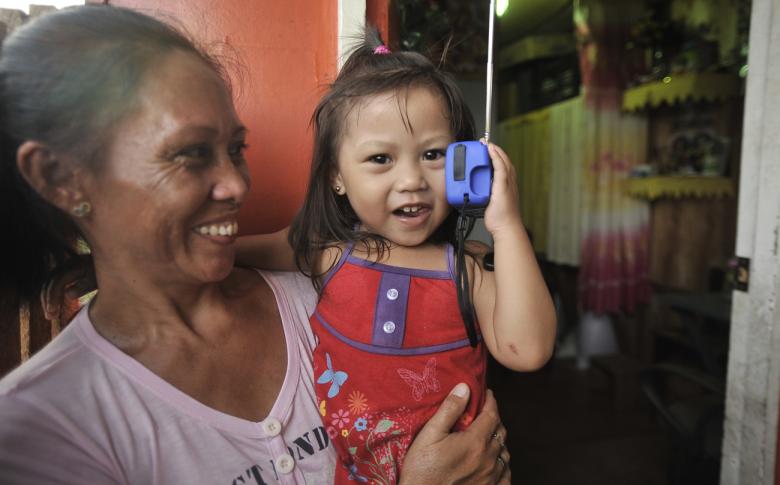Where Will You Be Tomorrow?

ETC 2020: Preparing for tomorrow's humanitarian technology needs today
Today, when an emergency strikes anywhere across the globe, the Emergency Telecommunications Cluster (ETC) network kicks into action deploying people and equipment necessary to provide urgent communications services to the humanitarian community. Tomorrow, this won't be enough.
‘Humanitarian' Community
We've already seen in the West Africa Ebola and Vanuatu Cyclone Pam responses, that the community needing connectivity to provide life-saving assistance is not just ‘humanitarians' anymore. In West Africa there were hundreds of healthcare workers who needed the internet just as much as someone distributing food. In Vanuatu it was the government and leaders of affected villages that needed communications to support the response effort. The ETC of course extended services to these groups in these operations, but tomorrow, the response community will include even more actors, needing even more services.
Affected Populations
It's taken some time, but the international aid community now realises - with great urgency - that the ability to communicate is an essential element of relief alongside food and shelter. Disaster affected communities need to be able to communicate with each other, contact the response community and receive messaging about relief efforts. In fact, they needed these services yesterday.
By tomorrow, mobile vouchers will have completely replaced paper as the main mechanism for food distributions. Mobile phones will be the primary tool for cash remittances, identity registration, access to health services and so much more. The response community has an obligation to ensure that if mobile networks are disrupted by disaster, that they are repaired as soon as possible. Mobiles phones are not a 'nice to have', they are life.
Government Resilience
Responsible for the functioning of their countries, governments play an enormous role in the aftermath of a disaster. It is now one month after Cyclone Pam, and in about a month from now, the international ICT response community won't be needed in Vanuatu because the government has the situation under control. If efforts are undertaken now to work with governments to build resilience, next time - and unfortunately there will be a next time –they won't need much international assistance at all. Local governments and national disaster management agencies should be empowered to better manage emergencies, to better save lives.
Enhanced Connectivity
Today we provide data and security comms (internet and two-way radio), but there is so much more emerging out there. The Haiti earthquake was the first time we saw humanitarians arriving with smartphones; tomorrow there will be another technology that takes us by surprise. With all these new services being rolled-out to the response community, governments and affected populations, the connectivity pipe is going to need to be much, much bigger.
Information security also plays a prominent role. In the Syria operation alone, there are nearly 4 million registered refugees and 12.2 million people in need inside the country. Tomorrow, when emergency communications services are extended to affected populations, there will be a huge amount of data to be managed, and bandwidth to be provided.
All our equipment is useless without electricity so we need to not only ensure sufficient power supply, but should be looking at renewable energy alternatives too.
Response Readiness
And as the adage goes, failing to plan is a plan to fail. So the response community must begin preparing all this now for the next disaster that will occur in the future any time, any place, affecting any number of people. The technologies and solutions need to be developed, tested and exercised, before the next emergency strikes. The relationships need to be established, the partnerships built, the funding sourced today, because who knows what tomorrow will bring.
Partnerships
Who is going to do this? Partners.
Global, regional, local partners. Humanitarian partners, corporate partners, government partners. Partners that make donations, partners that provide services, partners that develop technologies. Old partners, new partners, partners that don't even exist yet. You name it, we're all in this together.
Constructive, mutually beneficial collaboration across the ETC ecosystem is the only way that any of this can be achieved. And the consequence of non-delivery? Lives could be lost.
Today's strategy for tomorrow's life-saving digital solutions
The ETC network of organisations, committed to shaping the future of technology in emergencies, is focusing on all these areas in the ETC2020 strategy. Two months of strategic discussions on these work streams culminated in the presentation and endorsement of the strategy at the ETC Plenary meeting held at the end of April in Dubai.
The ETC Plenary meeting was part of Humanitarian ICT Week, which also comprised ETC Partners' Day and the Working Group on Emergency Telecommunications (WGET). Over 200 participants from national governments, United Nations entities, Non-Governmental Organisations, private sector and academia met in Dubai for the WGET to explore ‘Communicating With Communities', and the technologies, solutions and tools available – and being developed – that will enable delivery of Digital Aid.
The next step will be to bring all of this together, to develop an actionable plan and identify organisations which are prepared to take the lead on various elements of the ETC2020, working with the community – the response community that is, not just humanitarian – to make it happen. ETC2020 is today's strategy for tomorrow's life-saving digital solutions.
By 2020, the ETC will create an emergency response environment that provides humanitarians, citizens and governments with a seamless, resilient and principled communications experience.
By Mariko Hall, Global ETC Cell
Photo: IOM/ Ian Motus